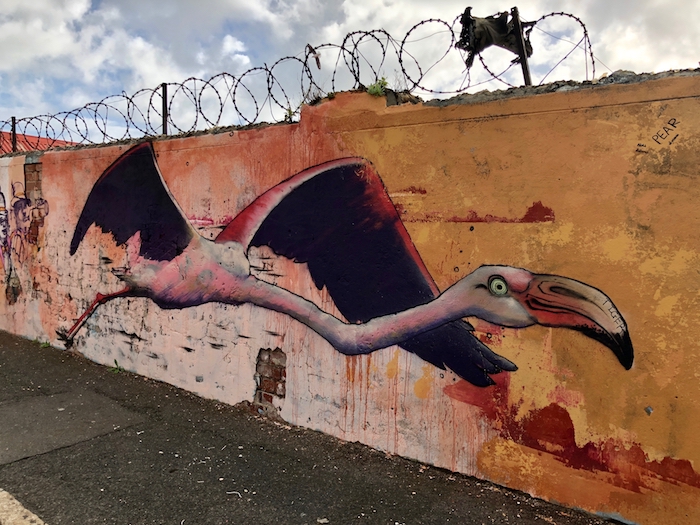Cape Town, South Africa, is a place of great natural beauty, tremendous possibility, and deep conflict. I’ve been here a few days and feel ill-equipped to find words to describe what I’ve seen and heard. What can one say about a country, a history, after only a few days?
Apartheid ended in 1994, with the first free elections and Nelson Mandela’s presidential win. And yet, Cape Town is a perfect illustration of what freedom truly is and isn’t because poverty isn’t freedom. While the political system of apartheid ended, there was no redistribution of wealth, no mass creation of jobs. Cape Town remains a deeply segregated city. Informal settlements ring the city center, where over a million people, all of whom are black, live in extreme poverty, while literally across a railroad line or a freeway lie multimillion dollar homes and expansive golf courses. Check out these images.
Wednesday I presented a workshop for educators who work in public schools. As participants arrived, the director of the association indicated to one young man walking in. “He was a principal in a school in a rough area,” she said. “He was born to a be a principal and he was great at it. And then he was shot in the neck and almost died. He was put at a desk job, but he’s lost, absolutely lost.”
Yet, I do not want to tell you only about the poverty and violence in Africa. That’s all we hear about Africa. Africa is much more. And: we must also learn about why there’s so much poverty and violence in Africa, and the role that colonialism and the West has played. But that’s a topic for another post.
So let me tell you about Athi, a young man I met in the IKaya’le Langa Garden project in Khayelitsha, a township with over a million people. Athi and some friends started a community garden. There is nothing green in Khayelitsha—no trees, flowers, or plants. They wanted to help children reconnect to food, to the earth. Children from the local school participate in afterschool programs in the garden and they marvel that food grows. We stood in the work shed as the winter rains poured down and Athi’s eyes lit up as the described the joys of growing vegetables and seeing his community learn to plant food again. Listen to him tell a part of this story here—hear his words, his voice.
In the Cape Town neighborhood of Salt River, artist Jason Redman gave us a tour of street art, including of his own works. What do you see in these images about what some South Africans are thinking and feeling?
Sabelo, our guide who works with the amazing organization, Coffeebeans Routes, walked us through the streets of Khayelitsha in the late afternoon. We made our way to the Spinach King where we ate delicious gluten free spinach bread and green smoothies. This story begins with a young man named Lufefe, who in 2011, with only $3.00, began baking spinach bread as a way to bring healthier food to his community. He now has a very popular chain of Spinach King stalls.
In a park in town, we met Collin, a Khoisan poet and musician reviving the Khoisan traditions and language. The Khoisan are the indigenous people of this region, (formerly called “Bushmen”) who arrived in this area over 150,000 years. The Dutch colonialists brought diseases which devastated the Khoisan, and there was overt violence against them, then they were pushed into distant desert lands, and many were assimilated. Collin travels into the remote regions of Namibia to learn his ancestral language from “the old grannies,” he tells us. And he plays a traditional instrument, a bow which is thought to be the oldest percussion instrument in the world. Listen to the sounds. Listen to his language.
I am here seeking a broader understanding of resilience, and Cape Town is challenging me. I don’t want to overlook the pain and suffering and struggle, and I must take in the whole picture—which includes the art and music and gardens. I’m challenged by the limitations of language; I question my Western perspective; I’m uncomfortable telling this story—because it’s one which should be heard from South Africans. And yet, I’ll tell a tiny part, my story—a few observations.
You can see many more images from this experience on our Onward Facebook page, and on my Instagram page.






